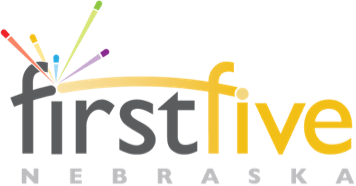This is the first in a series of three blog posts First Five Nebraska will publish on the Iron Triangle, a model developed by Louise Stoney (Alliance for Early Childhood Finance and Opportunities Exchange) and Libbie Poppick (Opportunities Exchange) that helps calculate the cost of providing the level of quality child care known to reduce the achievement gap. The three metrics of the triangle are Full Enrollment, Full Fee Collection and Revenue Covers Child Care Costs.
It’s no secret that early childhood care and education (ECE) businesses often struggle to make ends meet. One key reason is that there’s not always an obvious break-even point because funding can be unstable and there are varying quality standards these businesses must meet.
Providing higher-quality environments that close the achievement gap for young children can be costly, and as ECE providers seek to meet quality standards in Nebraska’s accountability system, Step Up to Quality, it’s important for them to ensure their businesses possess a sound financial strategy.
Louise Stoney has developed a simple formula for providers that focuses on three key metrics that make ECE programs financially viable:
1. Ensure full enrollment, every day in every classroom.
2. Collect tuition and fees, in full and on time.
3. Revenues cover per-child cost.
All three metrics, which Stoney refers to as the Iron Triangle, are interrelated. While her research shows that it is often very difficult to consistently meet all three metrics, it’s best to think of each metric as a sliding scale—as one moves, another must move to counterbalance it. The first metric we’ll look at in this blog series on the Iron Triangle is full enrollment.
Full Enrollment
Full enrollment is essential to the financial success of any early child care provider. Consumer tuition is providers’ largest source of revenue, which means that if enrollment drops below target, programs will either begin to lose money or be forced to reduce staff or services to compensate for the reduction in revenue.
So what can providers do to ensure they continue to operate at or near capacity? According to Stoney there are three key elements of effective program oversight:
- Track attendance carefully: Providers should track their vacancy rate, by classroom, on a weekly basis and use the data collected to drive their decision making.
- Utilize Technology: Providers should utilize a child management system that includes vacancy reports, staff assignment tools and supports online enrollment for families. Providers should also plan in advance when children will ‘age out’ of the program or move to a different classroom.
- Identify Trends: Providers should use data to understand when enrollment waxes and wanes, and plan classroom staffing accordingly.
The Policy Piece
Policymakers can help providers of high-quality ECE maximize their enrollment by targeting subsidies to the highest quality providers utilizing the Step Up to Quality accountability system. It’s unlikely that child care providers will operate at full enrollment all the time. However, experts suggest that child care centers can be financially sound with enrollment levels between 85% – 95%.
For more information: Using Metrics to Drive Quality and Sustainability in Early Care and Education Programs


